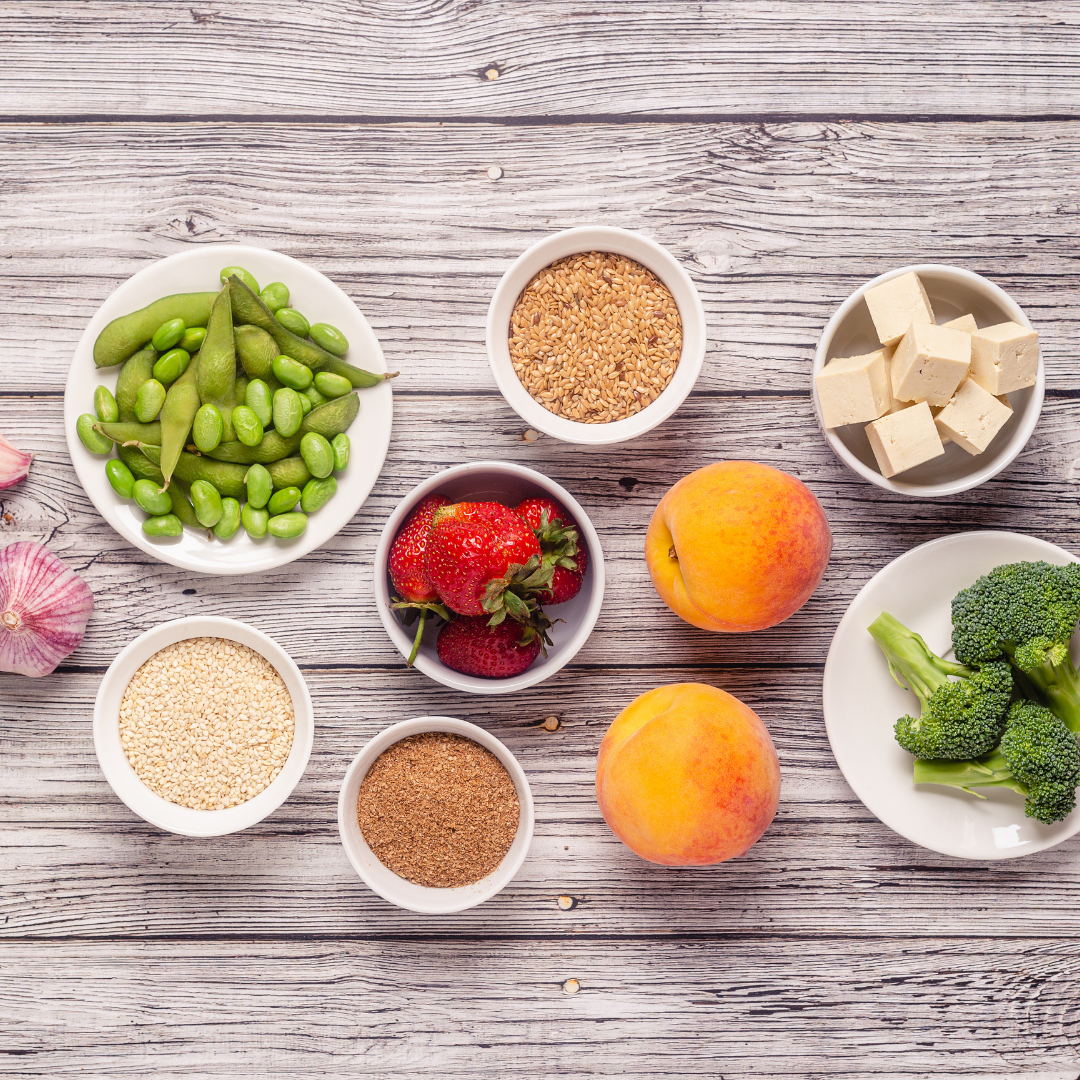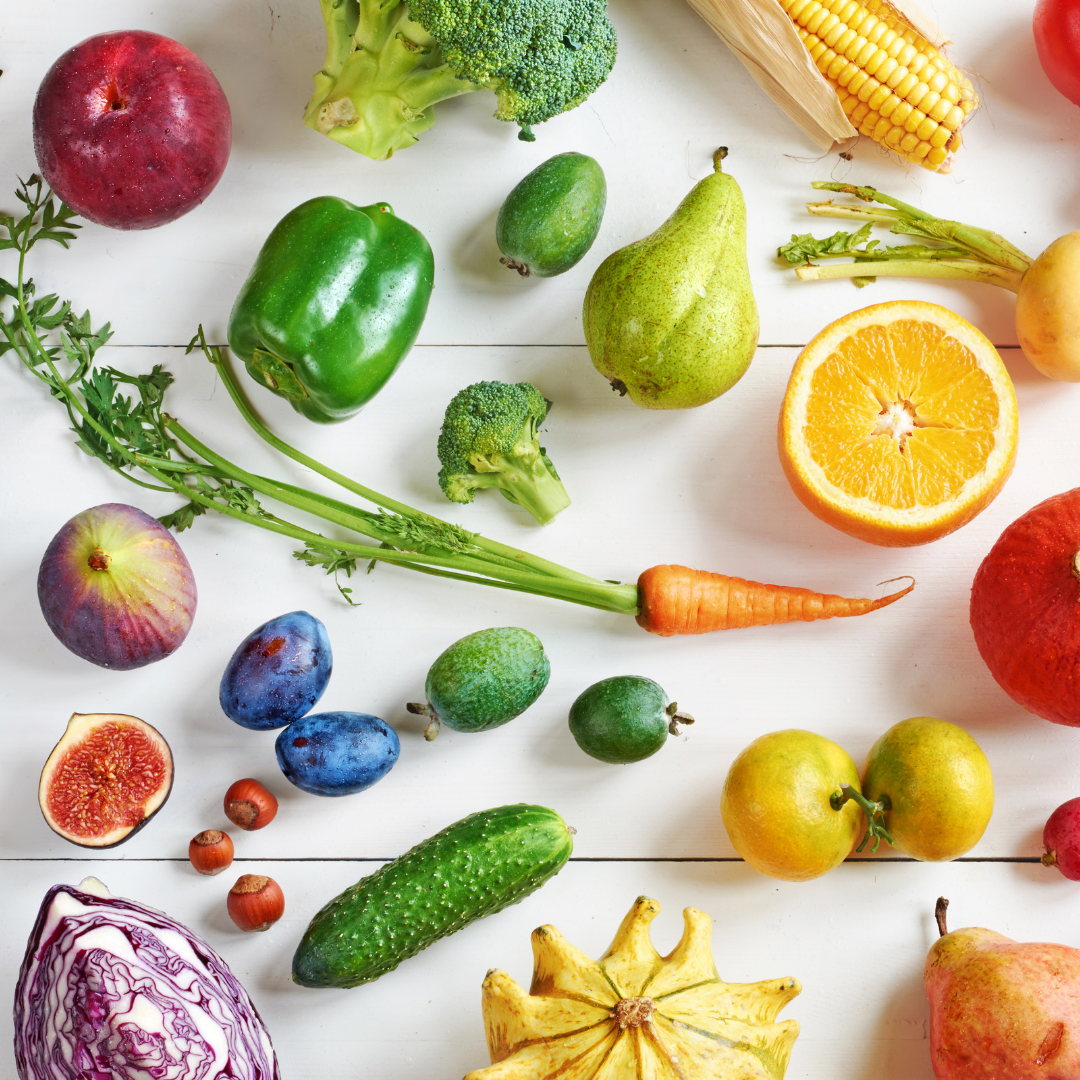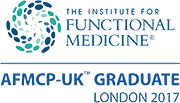A holistic approach to endometriosis
Mar 6, 2022
Posted by: Monique Parker


According to Endometriosis UK[i] 10% of the women of reproductive age in the UK suffer from endometriosis, one of the most common gynaecological conditions.[ii]
It takes on average about 7 years from the onset of symptoms to a formal diagnosis.
This is extremely worrying given the fact that endometriosis can have a devastating effect on women’s lives. Luckily, there is a bit more awareness these days and hopefully this timeframe can soon be reduced.
WHAT IS ENDOMETRIOSIS?

Endometriosis is a highly complex disease[iii], where cells like the ones you find in the lining of the uterus are growing elsewhere in the body, for example inside the pelvis, on the bowel, or inside the muscle of the womb. These cells respond to hormones in the same way the cells in the uterus lining do, so at some point during the monthly cycle they grow, break down and bleed. But because the blood can’t leave the body, it is causing pain, inflammation, swelling, and it forms adhesions (scar tissue).
Typical symptoms of endometriosis are painful periods, painful sex, and infertility. But that is not all, some women experience very heavy bleeding, fatigue, depression, nausea, irritable-bowel like symptoms such as constipation and bloating, etc. Some women have no symptoms at all.
Unfortunately, the condition is poorly understood[iv][v] and there are several theories on what is causing it.
One of the theories is that endometriosis is caused by ‘retrograde menstruation’, where menstrual blood/tissue flows backwards through the fallopian tubes into the pelvis and implants itself.
Other theories on the cause of endometriosis are immune dysfunction, lymphatic spread, exposure to environmental toxins[vi] [vii], genetics, inflammation, etc.
WHAT CAN BE DONE ABOUT ENDOMETRIOSIS?
Typical treatment for endometriosis is pain management, and/or hormone treatment and if these fail, then surgery in the form of ‘excision’ is the next option. A specialised endometriosis surgeon will remove the endometriosis lesions.
It is often thought that a hysterectomy (removal of the uterus and sometimes ovaries too) will cure endometriosis. However, consultant gynaecologist and endometriosis surgeon Dr Shaheen Khazali explained to me that removing the uterus doesn't treat endometriosis, but that there are situations where it could be beneficial. For instance, in cases of ‘adenomyosis’, where the endometriosis can be found inside the muscle of the uterus. As with all medical conditions, it depends on the patient’s individual situation.
Complementary medicine[viii] has been helpful for the support of endometriosis sufferers. Think of nutritional therapy[ix], acupuncture, massage or herbal medicine for pain relief, hormone balancing etc.
There are various areas that nutritional therapy can target, that would be helpful for endometriosis:
Hormone-support
Addressing chronic inflammation
Supporting the immune system
HORMONE-SUPPORT
As endometriosis is an oestrogen-dependent disorder, supporting hormones is very important. Endometriosis produces its own oestrogen. Controlling excess oestrogen can be achieved by making sure there is optimal gut health and good detoxication, so your body can get rid of excess oestrogen and toxins. It is also important to reduce exposure to environmental toxins, such as pesticides, plastics, cleaning products etc. These hormone disruptors can alter hormone functions by mimicking oestrogens for instance.
Optimal Gut Health

Eliminate constipation by:
- avoiding processed foods
- eating a wide variety of fibre-rich, plant-based foods
- eating healthy fats such as ghee, coconut oil, organic butter, olive oil, nuts & seeds
- fermented foods like natural yoghurt
Good Detoxification
Optimal gut health is a good start to healthy detoxification.
The liver detoxifies excess oestrogen, so if your liver is not working optimally, the oestrogen will get reabsorbed.
Foods for detox:

- cruciferous vegetables such as kale, broccoli, Brussels sprouts, and cauliflower[x]
- cabbage
- red peppers
- garlic and onions
- green leafy vegetables
- turmeric, dill, rosemary
- green tea
- foods rich in vitamin B and C
It is important to decrease your exposure to toxins.
Eat organic foods when possible, reduce the use of plastics etc. and investigate changing your household cleaning products into eco-friendly products such as Ecover, Earth Friendly or Ecozone. Also, use environmentally-friendly cosmetics and body products, and if you use tampons, buy 100% organic ones, that are free of dioxin and other chemicals.

Some chemicals to look out for in products: Sodium Lauryl/Laureth Sulphate, Phthalates (watch out for any names ending in phthalate, sometimes shortened to DBP, DEHP, BBP and BzBP), Parabens, Formaldehyde, Petrolatum (i.e. baby oil is 100% mineral oil - a by-product of petroleum)
Inhibiting Aromatase[xi]
Aromatase is an enzyme that is involved in the production of oestrogen. Endometriosis tissue contains very high levels of aromatase[xii]. Foods containing phytoestrogens[xiii] such as lignans[xiv] and flavonoids[xv], are natural aromatase inhibitors[xvi] [xvii]:

- Flaxseeds (for best bioavailability, use crushed or milled)[xviii]
- Sesame seeds
- Vegetables and fruit (especially citrus fruits, apples and berries)
- Legumes
- Tea (black and green)
- Chocolate (especially dark, at least 71% cocoa)
Please note:
- Whole grains are a good source of lignans, but they can be inflammatory!
- Red wine is a good source of flavonoids, but alcohol doesn’t help detoxification and can cause inflammation
As inflammation stimulates aromatase, it is important to reduce any inflammation.
Weight Management

Visceral adipose tissue is a hormonally active component of your total body fat. It is the fat that is wrapped around the organs in the abdomen (liver, pancreas etc.). Visceral fat is active and releases pro-inflammatory chemicals and other toxic substances.[xix] These fat cells also contain aromatase, so more oestrogen can be produced. To make matters worse, these visceral fat cells can store environmental toxins. To reduce inflammation and excess oestrogen, avoiding being overweight is essential.[xx]
ADDRESSING CHRONIC INFLAMMATION
Endometriosis is an inflammatory disease; hence it is vital to reduce inflammation as much as possible. Following an anti-inflammatory diet is key:
Foods to Avoid

1. Processed and refined foods
2. Sugar
3. Gluten - Research has shown that there is a link between endometriosis and Coeliac Disease[xxi], and that 12 months on a gluten-free diet can reduce painful endometriosis symptoms.[xxii]
4. Oxidised fats (i.e. vegetable oils) and trans fats (i.e. margarine, fried foods)
5. Dairy products - these are a source of excess hormones (i.e. growth factors), antibiotics, steroids and, pesticides, that might have physiological effects in humans.[xxiii] [xxiv] [xxv]
6. Excess caffeine and alcohol
What can you eat?

1. Good quality protein (lean, organic, preferably grass-fed meat, wild meat, game, and wild-caught, fresh fish such as salmon, trout or sardines)
2. Complex carbohydrates (vegetables, fibre-rich fruit, legumes, pulses)
3. A ‘rainbow’ of different coloured vegetables and fruit daily

4. Generous helpings of cruciferous vegetables (broccoli, cauliflower, cabbage, Brussels sprouts etc.) and dark green leafy vegetables (kale, spinach, watercress, rocket etc.
5. Herbs & spices (turmeric, ginger, cloves, cinnamon, rosemary, oregano, sage, thyme)
6. Healthy oils & fats (coconut oil, olive oil, ghee, avocado, nuts and seeds, oily fish)
7. Essential Fatty Acids (oily fish, nuts and seeds, eggs)
8. Dairy alternatives such as almond, hazelnut, hemp, coconut or oat milk and yoghurt
9. Fermented foods such as sauerkraut, kimchi and miso
10. Green tea
11. Shiitake mushrooms
12. Bone broth made with organic bones

Apart from following an anti-inflammatory diet, it is also essential to reduce environmental toxins, as these can trigger inflammation. Managing stress is another factor to deal with, since stress influences how the body regulates inflammation.[xxvi]
SUPPORTING THE IMMUNE SYSTEM
Various studies have shown changes in the immune system, that play a role in the survival and growth of displaced menstrual tissues in women with endometriosis.[xxvii] As endometriosis is considered a disease of immune dysregulation[xxviii] [xxix], supporting the immune system could be beneficial.
To function optimally, the immune system requires:
- A good, nutrient-dense diet
- Optimal gut health
- Adequate sleep (7-8hrs)

- Relaxation
- Regular exercise (be careful, as excessive exercise can have the opposite effect!)
Factors the immune system can do without:
- Lack of nutrients
- Lack of sleep
- Excess weigh
- Prolonged stress
Foods that support immunity
All the foods mentioned before will be helpful in supporting your immunity.
Make sure you get plenty of antioxidants[xxx] [xxxi] [xxxii] [xxxiii]that improve the function of the immune system and protect your cells from damage caused by free radicals. Foods that are high in antioxidants are for example brightly coloured vegetables and fruits (‘eat a rainbow’) and vitamin A rich foods such as organic liver and eggs. Other immune-boosting nutrients are zinc (shellfish, grass-fed beef, legumes, egg yolks, sunflower and pumpkin seeds, ginger), vitamin C and vitamin E (nuts, seeds, green leafy vegetables).
Vitamin D deserves special mentioning here as it can change immune responses.[xxxiv] Good sources are oily fish and eggs.
If you would like a tailor-made, personalised protocol for endometriosis, contact a qualified and registered nutritional therapist.
REFERENCES
[i] https://www.endometriosis-uk.org/endometriosis-facts-and-figures
[ii] https://www.uclh.nhs.uk/OURSERVICES/SERVICEA-/WH/GYNAE/ENDOM/Pages/Generalinformationabout.aspx
[iii] https://www.ncbi.nlm.nih.gov/pubmed/25765863
[iv] https://www.ncbi.nlm.nih.gov/pmc/articles/PMC4233437/
[v] https://www.ncbi.nlm.nih.gov/pubmed/15541453
[vi] https://archive-ouverte.unige.ch/unige:89552
[vii] https://academic.oup.com/toxsci/article/70/2/161/1621651
[viii] https://www.ncbi.nlm.nih.gov/pmc/articles/PMC3950373/
[ix] https://www.ncbi.nlm.nih.gov/pubmed/23419794
[x] https://www.ncbi.nlm.nih.gov/pubmed/10541453
[xi] https://www.ncbi.nlm.nih.gov/pmc/articles/PMC4828508/
[xii] https://www.ncbi.nlm.nih.gov/pubmed/15083380
[xiii] https://www.sciencedirect.com/science/article/pii/S0014299914006086
[xiv] http://lpi.oregonstate.edu/mic/dietary-factors/phytochemicals/lignans
[xv] https://www.sciencedirect.com/science/article/pii/0960076094900302
[xvi] https://www.hindawi.com/journals/er/2015/594656/
[xvii] https://www.sciencedirect.com/science/article/pii/096007609390022O
[xviii] https://www.ncbi.nlm.nih.gov/pmc/articles/PMC4077601/
[xix] https://www.ncbi.nlm.nih.gov/pmc/articles/PMC3569688/
[xx] https://www.ncbi.nlm.nih.gov/pubmed/10591334
[xxi] https://www.ncbi.nlm.nih.gov/pubmed/19400413
[xxii] https://www.ncbi.nlm.nih.gov/pubmed/23334113
[xxiii] https://www.ncbi.nlm.nih.gov/pmc/articles/PMC4524299/
[xxiv] https://www.tandfonline.com/doi/full/10.1080/10408398.2014.967385
[xxv] http://onlinelibrary.wiley.com/doi/10.1002/ijc.26265/full
[xxvi] https://www.sciencedaily.com/releases/2012/04/120402162546.htm
[xxvii] https://www.ncbi.nlm.nih.gov/pmc/articles/PMC3204940/
[xxviii] https://www.ncbi.nlm.nih.gov/pmc/articles/PMC4499658/
[xxix] https://www.ncbi.nlm.nih.gov/pmc/articles/PMC4515278/
[xxx] https://www.ncbi.nlm.nih.gov/m/pubmed/21700380/
[xxxi] https://www.ncbi.nlm.nih.gov/pubmed/19476631
[xxxii] https://www.ncbi.nlm.nih.gov/pubmed/22728166
[xxxiii] https://www.ncbi.nlm.nih.gov/pubmed/20969811
[xxxiv] https://www.ncbi.nlm.nih.gov/pmc/articles/PMC3166406/
[xxxv] https://www.ncbi.nlm.nih.gov/m/pubmed/18054352/
[xxxvi] https://www.ncbi.nlm.nih.gov/pmc/articles/PMC3614254/






